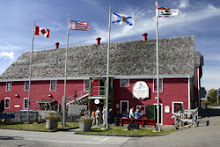Hello Everyone,
While listening to the Fisheries Museum of the Atlantic’s Maud R.M., complete with the put-put-put of an authentic make-and-break engine, I’m reminded that our shoreline waterways were once the main highway for coastal residents.
Whether people travelled by sail power or were propelled by oars or eventually by marine engines, the little boats of the coast linked island dwellers with the mainland. Trips to shore were carefully planned, incorporating trips to stores, visits with friends and relatives and rare appointments with doctors.
When make-and-break engines were first developed, at the turn of the 20th century, they gave an element of security to isolated communities. People were no longer dependent upon the weather; if it was "flat calm" they were still able to get to shore. More importantly, unless there was a vicious storm, they were able to go to shore to get doctors and members of the clergy, if there was an emergency at home.
The simple mechanics of the first marine engines made them user-friendly for those who had no previous experience with machinery.
The make and break experience is still available, for those who visit the Fisheries Museum of the Atlantic, in Lunenburg, Nova Scotia. The inshore boat replica, Maud R. M., putters around Lunenburg harbour at least once a week - and several lucky visitors to the Museum are able to take part in the tour!
Wishing you Smooth Sailing,
Heather
Subscribe to:
Comments (Atom)
